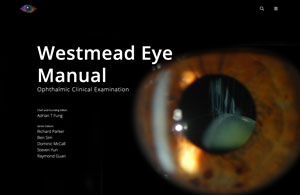26 Lens Management
26.1 Phaco-Vitrectomy
26.2 Pars Plana Lensectomy
26.3 Intraocular Lens Explantation
26.4 Secondary Intraocular Lens Insertion Clinical Scenarios & Clinical Decision Making
26.5 Sulcus Intraocular Lens
26.6 Anterior Chamber Intraocular Lens
26.7 Iris Fixated Intraocular Lenses
26.8.1 Scleral Sutured Intraocular Lens – Traditional 2 Point Fixation
26.8.2 Scleral Sutured Posterior Chamber Intraocular Lens 4 Point Fixation
26.8.3 Scleral Sutured Posterior Chamber Intraocular Lens – “Hoffman” Corneoscleral Pockets
26.8.4 Alternate Technique to Rescue a Dislocated IOL – Triangular Scleral Flap, Sutured IOL Technique
26.8.5 Suturing Without Exchanging the Intraocular Lens
26.9 Sutureless Scleral Fixation of an Intraocular Lens
26.7 Iris Fixated Intraocular Lenses
Iris-fixated intraocular lenses (IOL) use the patient’s iris to support secondary lenses in the absence of adequate capsular support. They may be positioned anteriorly (in front of the iris) or posteriorly (retropupillary location).
1. Preoperative Considerations
Prior to the implantation of an iris-fixated IOL, consider the iris anatomy, noting any prior iridectomies, significant atrophy, or the presence of other anatomical disruption that would preclude adequate support of an iris-fixated IOL.
Risk factors for such iris disruption include:
- Past trauma
- History of uveitis
- Congenital abnormalities
2. Advantages and Disadvantages of Iris-Fixated Lenses
Advantages:
- Relatively quick and simple technique (iris claw)
- Excellent cosmesis if performed correctly (iris claw)
- Posteriorly positioned iris-fixated lenses may potentially lead to a lower likelihood of corneal decompensation relative to AC-IOLs
- Posteriorly positioned iris-fixated lenses do not disturb the iridocorneal angle
- Vitrectomy may not be required if placed anteriorly
- Minimal risk of future IOL dislocation if placed anteriorly
- If a displaced three-piece lens is already present in the eye, this same lens can be repositioned (sutured to the iris) rather than introducing a new lens
Disadvantages:
- Not suitable if there is iris trauma or uveitis
- Long term iris atrophy remains a concern
- May have a higher rate of UGH syndrome, iris chaffing, chronic inflammation and cystoid macular edema
- Requires a larger wound (5.5mm optic diameter) since the IOL is PMMA and not foldable. A scleral tunnel is often required and there is a risk of greater astigmatism
- Risk of dislocation- particularly challenging if positioned posteriorly (and PMMA)
- Can distort pupil shape (oval ‘cats-eye’) if not properly enclaved (and hard to disenclave)
- May make post-operative posterior segment examination more difficult
- Irregularly shaped pupils can lead to glare and halos
- Difficult to disenclave once clipped
3. Methods of Iris Fixation
A. Iris Claw
The iris claw pinches iris tissue between two “claws” situated 180 degrees apart on the optic. The iris claw IOL was initially implanted in the anterior chamber but was subsequently developed into a posterior chamber IOL with retropupillary fixation as well.
The technique involves:
- Creation of one or two corneal paracenteses (nasally and temporal, 180 degrees apart) and a 5.5 mm wide main wound superiorly. A scleral tunnel is often preferred over a clear corneal incision since it has less astigmatism. If the patient has glaucoma and may require future glaucoma filtration surgery, the scleral tunnel can be positioned temporally to avoid disturbing the superior conjunctiva (Figure 26.7.1).
All rights reserved. No part of this publication which includes all images and diagrams may be reproduced, distributed, or transmitted in any form or by any means, including photocopying, recording, or other electronic or mechanical methods, without the prior written permission of the authors, except in the case of brief quotations embodied in critical reviews and certain other noncommercial uses permitted by copyright law.
Westmead Eye Manual
This invaluable open-source textbook for eye care professionals summarises the steps ophthalmologists need to perform when examining a patient.

